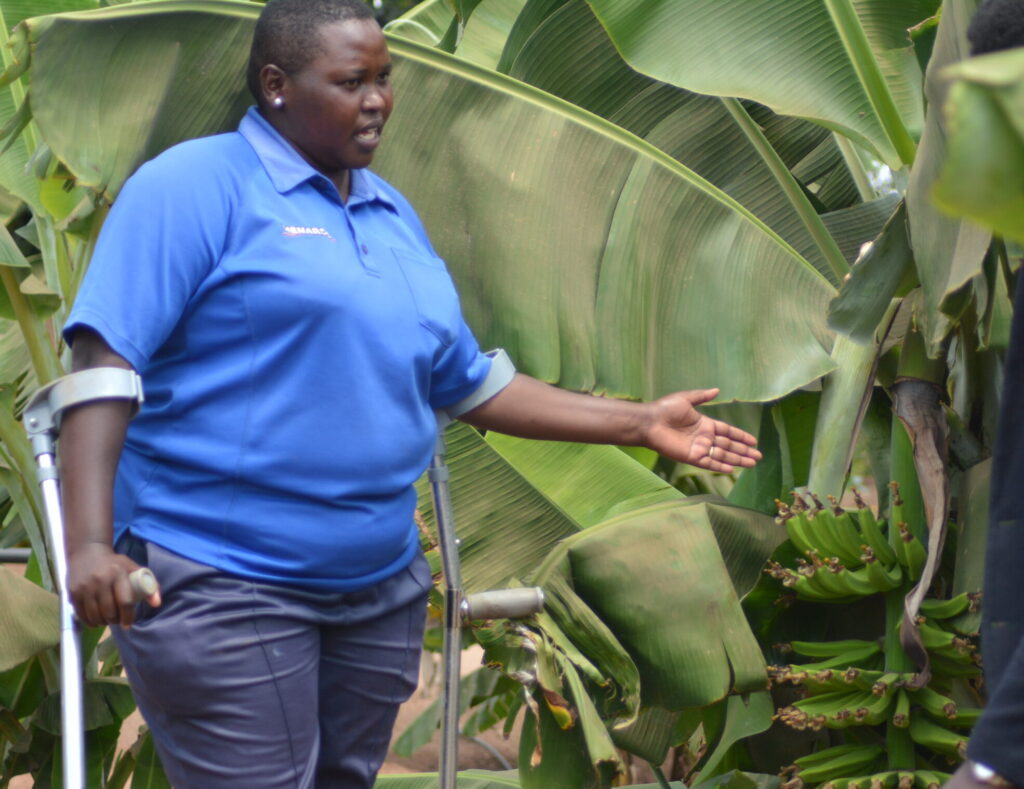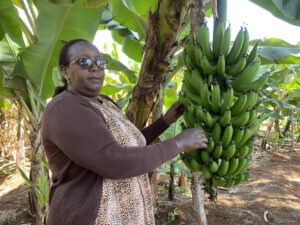
Bananas have always been a food crop for many farmers across Kenya, however, new varieties are shifting the banana farming into a cash-minting plant.
Corporal Doreen Chepkemoi, a farm manager at Yatta National Youth Service (NYS) in Machakos County, shares her insights into banana farming and its potential for substantial returns. She emphasizes that opting for new banana varieties is key to success, as traditional varieties often yield less.
In numbers
Doreen oversees a five-acre banana farm, where bananas take 15-18 months to bear fruit. They have cultivated two prolific varieties: Grand and Williams. These variants yield significantly more fruits compared to traditional ones.
“In a successful harvest, each stalk can bring in up to Ksh4,000. Presently, we have 27,450 banana plants. If you crunch the numbers, the earning potential is substantial,” Doreen explains.
With over 27,000 bananas, a farmer stands to make up to Ksh100,000,000. For Doreen, credit goes to the labor contributed by NYS Servicemen, which anticipates substantial profits during harvest. The farm employs irrigation due to the semi-arid nature of Machakos County.

Bananas are water-intensive crops, demanding significant irrigation investment. Doreen notes that each banana requires a minimum of 40 liters of water daily. To mitigate wastage, they use drip irrigation, minimizing water loss via evaporation. The farm employs irrigation pipes to channel water directly from the source to the plants, eliminating the need for irrigation costs in areas with ample rainfall.
“Each banana consumes 40 liters of water daily. We ensure adequate water supply for optimal growth, utilizing drip irrigation to streamline the process and minimize water loss through evaporation,” she details.
Planting guidelines
Doreen advises proper spacing for bananas, with each plant positioned 3 meters apart. Holes should be four feet deep to ensure plant strength and resilience against strong winds.
After a certain period of growth, suckers begin to emerge. Doreen suggests allowing a maximum of two suckers to grow alongside the main tree. “Suckers will sprout eventually, so it’s important not to let more than two compete with the main tree for water and nutrients. Any excess suckers should be removed and transplanted into a different hole,” she advises.
It is evident that banana farming presents a lucrative agricultural venture. Choosing superior varieties and investing time in cultivation can yield remarkable returns, potentially transforming the livelihood of a farmer. In regions with favorable climatic conditions and sufficient rainfall, large-scale banana cultivation holds the promise of providing farmers with a substantial income. This will also go hand in hand in reducing unemployment in Kenya.
Comment on our Facebook page
Subscribe to our newsletter to get interesting news stories everyday






